 Toro Muerto es el sitio de arte rupestre más grande de los Andes, conocido desde 1953. En 2018, un equipo de investigación polaco-peruano inició el Proyecto de Investigación Arqueológica – Toro Muerto (PIA-TM) e inspeccionó una parte informada anteriormente, pero no inspeccionada en el extremo norte del sitio. Se llamaba Sector-X. Este estudio intenta analizar el arte rupestre del Sector-X considerando especialmente el estado del Sector-X dentro del Complejo de Arte Rupestre de Toro Muerto. Para lograr esto, mi estudio se enfoca principalmente en la ocurrencia y distribución de un petroglifo de un ave específico que es exclusivo del Valle Central de Majes en el sur de Perú.
Toro Muerto es el sitio de arte rupestre más grande de los Andes, conocido desde 1953. En 2018, un equipo de investigación polaco-peruano inició el Proyecto de Investigación Arqueológica – Toro Muerto (PIA-TM) e inspeccionó una parte informada anteriormente, pero no inspeccionada en el extremo norte del sitio. Se llamaba Sector-X. Este estudio intenta analizar el arte rupestre del Sector-X considerando especialmente el estado del Sector-X dentro del Complejo de Arte Rupestre de Toro Muerto. Para lograr esto, mi estudio se enfoca principalmente en la ocurrencia y distribución de un petroglifo de un ave específico que es exclusivo del Valle Central de Majes en el sur de Perú.
By Maarten van Hoek
*
The Status of Sector-X within the Rock
Art Complex of Toro Muerto, Peru
Maarten van Hoek
Abstract
Toro Muerto is the largest rock art site in the Andes, known since 1953. In 2018 a Polish-Peruvian research team started the Proyecto de Investigación Arqueológica – Toro Muerto (PIA-TM) and surveyed an earlier-reported, yet not-surveyed part in the far north of the site. It was called Sector-X. This study attempts at analysing the rock art at Sector-X especially by considering the status of Sector-X within the Rock Art Complex of Toro Muerto. To achieve this, my study mainly focusses on the occurrence and distribution of a specific bird petroglyph that is exclusive for the Central Majes Valley of southern Peru.
*
Also read the Addenda at the end of the paper
There are numerous rock art sites in the Desert Andes of South America (the coastal desert between the High Andes and the Pacific Coast), but Toro Muerto is undoubtedly the biggest. No less than 2584 boulders with petroglyphs (many with multiple panels) have so far been recorded and certainly several panels/petroglyphs still wait to be dis-covered (even literally). The site was first reported to the scientific world in 1953 by Eloy Linares Málaga, archaeologist from Arequipa, Peru, who published several papers and books about Arequipa rock art. Unfortunately, his information about Arequipa rock art and of Toro Muerto is not always reliable. For instance, a petroglyph said by him to be from Toro Muerto actually is found at Alto de Pitis and does not depict a “figura abstracta”, but a Majes “Dancer” (Linares Málaga 1999: Esq. No. 47; 139). Linares Málaga did not see Sector-X.
Since then several scholars and investigators surveyed the site (to avoid unnecessary repetition: for more information see the general information about research in the publication by Gonzales et al. 2020). The first sizeable inventory was by Antonio Núñez Jiménez (1986), a Cuban investigator who documented mainly the southern part. However, also his illustrations are not always reliable (Van Hoek 2011: 110 – 135). Also Núñez Jiménez did not survey Sector-X.
In 2015 a Polish-Peruvian project (the Proyecto Arqueológico Toro Muerto, co–conducted by Karolina Juszczyk) started to document the rock art at Toro Muerto and their results (from the years 2015 to 2017 and covering the southern part of the boulder field) were published on-line and are still accessible up to now (January 2022). The work was resumed in 2018 by the Proyecto de Investigación Arqueológica – Toro Muerto (henceforth referred to as PIA-TM), which resulted in the documentation of the northern part of the site (not available online). This latter survey also included the area that was called Sector-X by the PIA-TM. However, for several reasons I find it strange that the leading PIA-TM archaeologists – Janusz Wołoszyn and Liz Gonzales Ruiz – claim that they discovered Sector-X in 2018 (Wołoszyn et al. 2019: 3), while PIA-TM photos of petroglyph boulders at Sector-X show the date of October 2017 (and possibly for that reason this flaw was rectified in Gonzales Ruiz et al. 2020).
Moreover, as early as 2006 we were informed by the warden at the entrance of Toro Muerto that more boulders with petroglyphs had previously been recorded “somewhere to the NW of Toro Muerto”. This new area most likely was Sector-X. Secondly, I have a photo of a part of Sector-X which was taken by a visitor in 2017. Therefore the PIA-TM team was (only) the first to fully and scientifically survey Sector-X, a small site where the PIA-TM recorded no less than 92 boulders with petroglyphs (their numbers PIA-TM-2470 to 2561; Gonzales et al. 2020: 97).
Together with my wife Elles I surveyed most of Toro Muerto many times (intermittently from 2002 to 2016), but having been informed about the new area with petroglyph boulders in 2006, we ventured to reach that new spot in 2009 and headed uphill to the NW end of the site. Actually, we did see Sector-X, but at that moment we did not realise it. Looking WNW from Boulder TM-Nn-002 – the northernmost decorated boulder (at 877 m asl in Google Earth 2012) that we manged to locate (Figures 1 and 2; for location see Figure 18) – we saw a group of boulders on top of a hill – located roughly at 955 m asl in Google Earth 2012 – (Figure 1), but we decided not to climb the last 200 meters horizontally (and 75 m vertically) uphill because of fatigue (also because we realised that we had to walk back to Corire as well). Long after our visit in 2009 I found out that we indeed saw Sector-X. We hope that someday we can re-visit Toro Muerto to survey Sector-X; a fascinating spot with intriguing petroglyphs.
Figure 1: The location of Sector-X viewed from Boulder TM-Nn-002 at the far north of Toro Muerto (for location see Figure 18). The distance from the boulder in the foreground and Sector-X is a little over 200 meters. Photograph © by Maarten van Hoek.
To see an enlargement of an illustration, click on the image. To return to the TRACCE web page, click on the enlargement.
Figure 2: Boulder TM-Nn-002 at Toro Muerto. Photograph © by Maarten van Hoek.
Figure 3: Toro Muerto seen from Alto de Pitis. Photograph © by Maarten van Hoek.
PART 1
Location of Sector-X
Toro Muerto is the major rock art site of the whole of the Desert Andes. The site is located on the west bank of the Majes Valley (Department of Arequipa – southern Peru). The site is truly enormous. It stretches for about 5.5 km from the most southerly rock art panel near the cliff at the SE end (at 494 m asl) to the area around Sector-X in the NW. However, Sector-X is located at roughly 955 m and definitely not at 1300 m as stated by Wołoszyn et al. (2020: 38; and again by Gonzales et al. 2020: 84).
It is very tiresome to walk the sloping area (Figure 4) because of the very loose sands and thus, reaching Sector-X – located 3862 m NW of the ticket office at the village of La Candelaria – is not an easy task, even when being dropped at the shelter near the centre of the boulder field (at 650 m asl). Then it is still 2230 meters to Sector-X, involving an (often zigzagging) climb of about 300 meters, often in scorching sunlight.
Figure 4: Location of Sector-X in the Majes Valley of Southern Peru and a section showing the location of Sector-X (X) on the western slope of the valley. Drawings © by Maarten van Hoek, based on Google Earth.
Sector-X is not actually a true hill but a slightly projecting shoulder on the massive eastern hill slope of Cerro las Salinas (ridge at 1540 m asl). On “top” of Sector-X is a rather small boulder field measuring 105 meters (from NNW to SSE) by 75 meters (from WSW to ENE). However, not all boulders in the boulder field have decorated boulders. The boulders with rock art are found in an rather small area of about 60 m from south to north. In fact, most boulders do not bear petroglyphs at all (which corresponds with the situation at Toro Muerto as a whole). Especially the south part seems to be bereft of rock art, while the eastern part has only a few decorated boulders. Most of the decorated boulders are found at the west edge of the boulder field with a remarkable high concentration in the NW corner.
Finally, it may be significant that the majority of the often profusely decorated panels are oriented to the west, although the views to the west are blocked by the high ridge of Cerro las Salinas. Also the views to the north and NE are blocked by higher ground and thus Apu Coropuna (the Sacred Mountain to the north of Sector-X) is not visible. For the same reason Apu Ampato is invisible (being blocked by Cerro Zuñimarca), but (on a good day) it should be possible to see the top of Apu Misti and (only just) the top of Apu Chachani, roughly 120 km to the east (all those sight-lines have not been checked in the field by us, but have been established only by using Google Earth).
Location of the Petroglyph Panels
Because we have never visited Sector-X I have no knowledge of all decorated panels at that site, especially as (up to January 2022) no inventory of the north part of Toro Muerto – fully surveyed by the PIA-TM – has been made available and publications (at least those with useful information about the decorated panels) are extremely limited and not very informative as well. Also for that reason I had to apply my own numbering system for Sector-X (starting with TM-NNx-001 etc.), especially as the map published by Wołoszyn et al. (2020: Fig. 3) is completely illegible regarding the PIA-TM numbers, while the far better legible map published by Gonzalez et al. (2020: Fig. 5) does not show all numbers used by the PIA-TM. Moreover, it is often impossible to determine which number refers to which boulder. Therefore their maps mainly give an impression of the density of the decorated boulders at Sector-X.
Regarding the locations of the boulders at Toro Muerto I should emphasise that during all our surveys at this site (and all other rock art sites in the Desert Andes) we were not assisted by an extensive, financed team (like PIA-TM), nor did we use any modern technology (like a drone or GPS-equipment). For that reason some locations, distances and altitudes mentioned in this study – all based on Google Earth – may be (slightly) inaccurate.
According to Gonzales et al. the largest and most lavishly decorated boulder at Sector-X is Boulder PIA-TM-2498 (2020: Fig. 6), which has been labelled TM-NNx-001 by me in this study. Unfortunately Boulder PIA-TM-2498 (surveyed by the PIA-TM on 12-10-17) has not been numbered on their plan of Sector-X (2020: Fig. 5). Also several other boulders prove not to have been numbered on that PIA-TM map (like their Boulder PIA-TM-2497). Below I include an (incomplete) list of a selection of the decorated boulders at Sector-X of which I have some graphical information (about one third of the grand total at Sector-X). In this list I attempted as much as possible to also provide the official PIA-TM numbers based on PIA-TM publications (my responsibility if anything is incorrect).
Based on the information that I have available I created a map of that part of Sector-X where the majority of the decorated boulders is found. My map is incomplete, as not all decorated boulders in that area are shown, but it is rather accurate regarding the location (Figure 5). Yet, the shape of the boulders and/or the orientation of the panels may be slightly inaccurate, as may be the location. The orange colour indicates the panels I have no information about: they may be empty or they may bear petroglyphs after all. The dark-yellow colour indicates panels definitely with rock art (without claiming to know all petroglyphs on those panels, though).
There are more decorated boulders in this area, for instance between Boulders TM-NNx-001 and 003. Also the large boulder (PIA-TM-2486) directly west of TM-NNx-025 has petroglyphs, but I have no further information. However, Boulder TM-NNx-037 (PIA-TM-2487) in the row has at least one decorated (NE-facing) panel. There are several (mainly small) decorated boulders at Sector-X that have been omitted in my map on purpose, as they do not really contribute to the nature of this study. The scale of my map can be estimated by taking the north-south width of Panel TM-NNx-001A, which is about 4.5 meters. The numbers on the map refer to the list below (1 on the map is TM-NNx-001 etc.). Not all decorated boulders/panels will be described and only the most relevant petroglyphs on each panel will be briefly described. Only in a few cases measurements will be provided (because of lack of scales in many photos).
Figure 5: Map (updated February 2022) of the part of Sector-X where most of the decorated boulders are located, which have all been surveyed by the PIA-TM. The location, orientation, shape and the division of the panels on my map may be slightly incorrect. Orange: no information or no petroglyphs; Yellow: decorated panels, most of which have (very briefly and incompletely) been described in the list below; the red panel of Boulder 2 may represent an attempt at removing/stealing a (decorated?) panel. Map and information © by Maarten van Hoek, based on a very large number of sources.
*
A Selection of Decorated Boulders at Sector-X
TM-NNx-001 (PIA-TM-2498). The major boulder at Sector-X, measuring about 4.50 m across. Located at 16° 12.564’S and 72° 30.958’W in Google Earth 2012. At least six panels. Panel A: One fully pecked, anthropomorphised Stripe (male?) and two outlined examples (one female?). Three frontally depicted birds. Ten “Rectangular Birds” of different sizes. The smallest bird (marked 6 in Figure 6) measures 12.5 cm across; the largest (10 in Figure 6) 30 cm. The “Rectangular Birds” on this panel are fully pecked and/or outlined; one unfinished; one with outlined, stepped pattern wing (inset). Four other birds (marked with * in Figure 6); one (having a wing span of 47 cm) with a layout that is unique in the Majes Rock Art Style (MRAS). Four anthropomorphic figures; one lined with dots (compare with a similar example on Panel TM-NNx-003C). Two large and complex Solar Motifs (the larger 75 cm across). Three large Dotted Quadrupeds and one smaller, unfinished example. Panel E: One unfinished “Rectangular Bird” (having no
Figure 6: Panel TM-NNx-001A at Sector-X. Photograph © by James Posso Sánchez.
TM-NNx-002 (PIA-TM-2497). At least six panels (one vandalised; one possibly partially removed). Panel A: Three “Rectangular Birds” (yellow in Figure 7). One frontally depicted bird. One Dotted Quadruped. Panel B: One unfinished “Rectangular Bird”. One possible Dotted Quadruped. Panel C: One “Rectangular Bird” with a “Trophy” Head held in its beak (see Figure 10E). One fully pecked but deformed “Rectangular Bird”. Panel D: One Dotted Quadruped (32 cm across). Panel E: A (Dotted?) Quadruped? Panel F: Cross comprising parallel lines that have a small curl at each end.
Figure 7: Panel TM-NNx-002A. Drawing © by Maarten van Hoek, based on an illustration by James Posso Sánchez (2020b: 134).
TM-NNx-003 (PIA-TM-2509). At least three panels. Panel A: Two “Rectangular Birds”. Two frontally depicted birds. Stripes and zigzags. Four fully pecked, rotated quadrupeds. Panel B: One unfinished “Rectangular Bird”. Anthropomorph(s?). Panel C: Three “Rectangular Birds” (the largest 48 cm in height). One dotted anthropomorph “lifting a dotted shield”? Large Solar Motif (Figure 8).
Figure 8: Panel TM-NNx-003C. Photograph © by Karolina Juszczyk (2021).
TM-NNx-005 (PIA-TM-2476). At least two panels. Panel A: One “Rectangular Bird” (22 cm across). One large and two small Solar Motifs. Unfinished quadruped filled with small rings. Group of rings (unfinished zoomorph? – a feline?). Backwards looking quadruped (Figure 9).
Figure 9: Panel TM-NNx-005A. Drawing © by Maarten van Hoek, based on an illustration by James Posso Sánchez (2020b: 137).
TM-NNx-006 (PIA-TM-2481). One panel with a large spiral.
TM-NNx-008: Smaller boulder with two panels. Panel A: One large, outlined “Rectangular Bird” (Figure 10D). Panel B: One “fully” pecked anthropomorph with an outlined head and two “strange” legs, two arms and – exceptionally – also two “wings” (see Figure 14B). One smaller, fully pecked anthropomorph (?).
Figure 10: “Rectangular Birds” at Sector-X. A: Panel TM-NNx-034; B: Panel TM-NNx-017; C: Panel TM-NNx-033; D: Panel TM-NNx-008; E: Panel TM-NNx-002C; F: Panel TM-NNx-013. Drawings © by Maarten van Hoek, all based on illustrations by James Posso Sánchez (2020a; 2020b; but drawings B and E: published by: “Lubetima Te Informa” [2019]).
TM-NNx-009 (PIA-TM-2482): At least two panels. Panel A: One fully laterally depicted bird. Large, complex Solar Motif. One feline? (white in Figure 11). Two quadrupeds showing teeth (compare the smaller one with a similar image on Panel TM-Ns-013 (see Figure 16), where it is found combined with a row of Majes “Dancers”). Panel B: One “Rectangular Bird”.
Figure 11: Panels TM-NNx-009A and B. Drawing © by Maarten van Hoek, based on an illustration by James Posso Sánchez (2020b: 149).
TM-NNx-010 (PIA-TM-2552): Boulder with petroglyphs partially covered by sand, located at 16° 12.555’S and 72° 30.970’W in Google Earth 2012. One large, outlined “Rectangular Bird” (with a “Trophy” Head?). One Dotted Quadruped. One possible “Trophy” head. Row of eleven small circles with central dot. One small, fully pecked anthropomorph, yet with eyes and mouth, seemingly lifting a circle with central dot.
TM-NNx-013: Small boulder (at the foot of Boulder TM-NNx-023) with possibly two decorated panels. Panel A: One “Rectangular Bird” (see Figure 10F).
TM-NNx-015 (PIA-TM-2474). One panel with a rectangular, rayed mask (or Solar Motif?).
TM-NNx-016: Simple anthropomorph with large feet and an outlined, circular head without facial features (compare with similar petroglyphs at Toro Muerto, for instance on Panel TM-Cb-023). Solar Motif.
TM-NNx-017 (PIA-TM-2475): Panel (at 947 m asl and at 16° 12.581’S and 72° 30.950’W in Google Earth 2012) with one outlined “Rectangular Bird” with a “Trophy” Head below the beak, confronted by an unfinished “Rectangular Bird” (see Figure 10B).
TM-NNx-020: Panel with one “Rectangular Bird” (Figure 12). Large outlined quadruped showing teeth confronted by another quadruped. Outlined cross. Just south of the outlined cross is a groove that could well represent an unfinished “Rectangular Bird”. Compare this with a similar situation on Panel TM-Nw-033A, 1050 m further SSE (Van Hoek 2019a: Fig. 18).
Figure 12: Panel TM-NNx-020. Drawing © by Maarten van Hoek, based on an illustration by James Posso Sánchez (2020b: 149).
TM-NNx-023: At least four panels. Panel A: One “Rectangular Bird” (the anthropomorph just to its south could represent a Majes “Dancer”). One fully laterally depicted and outlined bird (Figure 13). Panel B: One possible “Trophy” Head. (compare this with two similar petroglyphs on Panel TM-Dx-056, located about 2500 m to the SE). Panel C: One “Rectangular Bird”.
Figure 13: Panel TM-NNx-023A. Inset: Bird petroglyph on Panel TM-Be-051A. Drawings © by Maarten van Hoek; Panel 23A: based on an illustration by James Posso Sánchez (2020b: 132). Inset: drawing © by Maarten van Hoek.
TM-NNx-025 (PIA-TM-2479): At least two panels. Panel A: Two “Rectangular Birds”, one with fully pecked, triangular wing (see Posso 2020b: 240). Large Solar Motif (or mask?). Two small Solar Motifs. Panel B: Complex outlined quadruped filled with dots and small circles.
TM-NNx-026: At least one panel. Short, broad anthropomorphised Stripe. Solar Motif.
TM-NNx-028: Large, fully pecked and fully frontally depicted anthropomorph with outlined head showing a nose, two eyes and an open, menacing mouth featuring teeth. It has both arms (each ending in four digits) raised over its head, reaching (?) for a quadruped that seems to have part of a wing of a “Rectangular Bird” projecting from its back (Figure 14A). The drawing of this panel published by Gonzales et al. (2020: Fig. 18) is completely incorrect.
Figure 14A: Panel TM-NNx-028. B: Detail from Panel TM-NNx-008. Drawings © by Maarten van Hoek, A and B: based on illustrations by James Posso Sánchez (B: 2020a; A: published by “Lubetima Te Informa” [2019]).
TM-NNx-033: Panel with two “Rectangular Birds”, the larger with a solar (?) “Trophy” Head with “hanging cord” held in his beak (see Figure 10C). Two Dotted Quadrupeds and one large, unfinished (?) Dotted Quadruped. This panel (Van Hoek 2020b: Fig. 69C) may be part of an already described or mentioned boulder in this study.
TM-NNx-034: Panel with one “Rectangular Bird” with legs longer than usual (see Figure 10A). Long, vertically arranged snake-like (meander) motif that is composed of two angular, parallel lines ending in an empty circle. This small boulder is located immediately south of Boulder TM-NNx-036.
TM-NNx-035: Boulder with possibly two panels. The left part has one petroglyph of a “Rectangular Bird”; the right part has an angular, horizontally arranged meander.
TM-NNx-036: Just north of TM-NNx-034. At least two panels. Panel A: Long (upper) panel with at least three petroglyphs of a “Rectangular Bird”, one superimposed upon or by a very long groove. Unfinished (?) anthropomorph. Two parallel, very long lines (Figure 15).
Figure 15: Panel TM-NNx-036. Drawings © by Maarten van Hoek, based on an illustration by James Posso Sánchez (2020b: 38-39).
Contextualising the Status of Sector-X
In fact it is impossible to put the imagery of Sector-X in a proper context without having profound knowledge of the content of the imagery at Toro Muerto and of the imagery the Central Majes Valley and beyond. Despite the fact that I have not seen Sector-X, have not seen every rock art panel in the Central Majes Valley and definitely not have seen every rock art image in the area where the Majes Rock Art Style is found (henceforth referred to as MRAS; the area between the valleys of the Río Caravelí in the west and the Río Chili in the east; for an [outdated] map see Jennings, Van Hoek et al. 2019: Fig. 2), I believe I have sufficient information to compare the imagery of Sector-X with the rock art of Toro Muerto as a whole.
First of all it must be mentioned that a gigantic rock art site like Toro Muerto has not one, but a number of layers of rock art production. In the case of Toro Muerto the situation is rather confusing, also because – logically – those rock art layers are not found strictly separated. Rock art production most likely started in the first centuries BC. But where? At Toro Muerto or at Alto de Pitis (or elsewhere?). Rock art production continued well into the present day (when unfortunately it mainly comprises unwanted vandalism).
So far no-one has been able to convincingly separate those rock art layers graphically or chronologically. I tried to present a chronology in a paper (Van Hoek 2003) and in a book (Van Hoek 2013), but now I regard those two attempts as being incorrect. I for one am now convinced that the Chuquibamba Culture (to which I referred to in my 2013 book), did not create a specific and identifiable rock art layer at Toro Muerto (or anywhere-else in the Central Majes Valley, for that matter). Also the Wari did not create a specific rock art layer, although the Wari may have played a role in the creation of the rock art at Sector-X. But I am convinced that not the Wari but the Majes People manufactured the rock art in the Central Majes Valley.
Indeed, in a sequel (published in 2018) I argued that in the Central Majes Valley it was a specific group who created rock art at Toro Muerto and at other sites in the influence-area of the MRAS. I have labelled this group “The Majes People”; a group of people with a distinctive culture, the Majes Culture. But understandably also the Majes Culture itself changed over time and – moreover – was influenced by other cultures, although in my opinion only modestly. Yet, all those facts make it difficult to separate the rock art layers at Toro Muerto.
But there are a few data that will help to contextualise the status of Sector-X. There are several tactics to do so. Firstly, one can compare the prevailing style of the imagery at Sector-X with the general styles at Toro Muerto. Secondly, one can look at the images that are not present at Sector-X (the “missing links”) and those that connect Sector-X with the remainder of Toro Muerto (the links). And finally it will be revealing to consider the images of birds at Toro Muerto, focussing on the types of birds that are absent at Sector-X, simultaneously considering the role of one specific type of bird that is surprisingly and tellingly overrepresented at Sector-X, the “Rectangular Bird”.
Curvilinear Versus Rectilinear
Any observant visitor to Toro Muerto will notice the difference between the large rectilinear zigzag patterns and the often much smaller curvilinear images of several types of zoomorphs. This contrast proves to represent a general dichotomy regarding the imagery at Toro Muerto. Yet, the imagery presented at Toro Muerto is often most confusing. At Toro Muerto in general there is an often puzzling mixture of curvilinear and rectilinear petroglyphs. Moreover, curvilinear and rectilinear images may appear together on an individual panel, while other panels only have only curvilinear (Figure 16) or only rectilinear imagery. It is now remarkable that only at Toro Muerto (and to a much lesser extent at Alto de Pitis and even less at La Laja) such a confusing mixture exists.
Figure 16: Panel TM-Ab-011 with examples of curvilinear petroglyphs. Photograph © by Maarten van Hoek.
To complicate things further, it proves that especially meandering motifs at Toro Muerto have three appearances. Definitely curvilinear are several long, often vertically arranged serpentine forms (not depicting serpents, but possibly symbolising snakes). A rectilinear variation of those serpentine forms are the numerous, often impressively large zigzags that comprise straight, diagonal lines and sharp corners only. However, many meandering motifs are rectilinear, but are composed of straight vertical and horizontal lines drawn at right angles only: the angular type.
It is now important that, although both curvilinear and zigzagging meanders occur at Sector-X, it is the right-angled type of meander that dominates at Sector-X (for instance on Panels TM-NNx-001A; TM-NNx-002C; TM-NNx-005A (see Figure 9); TM-NNx-010; TM-NNx-019; TM-NNx-022 (see Figure 10A); TM-NNx-023A (see Figure 13); TM-NNx-034; TM-NNx-035 and TM-NNx-036B). Together with the many straight Stripes, the rectilinear quadrupeds (for instance on Panels TM-NNx-005A; TM-NNx-009 [see Figure 11]; TM-NNx-023 and especially Panel TM-NNx-020 [see Figure 12]) and specifically in combination with the many rectilinear “Rectangular Birds”, the overall impression of the imagery at Sector-X is more rectilinear than curvilinear.
Linking Sector-X with Toro Muerto
There are several petroglyphs at Sector-X that are also present in the remainder of Toro Muerto. Of course this is the case with the Stripe and the typical Zigzag-Stripe combinations and all the often associated meandering motifs (serpentines, individual zigzags and rectilinear [angular] meanders), but also rectilinear zoomorphs (both quadrupeds and “Rectangular Birds”) are often seen on panels at Toro Muerto as a whole. Sector-X has some very large and complex Solar Motifs, as well as simpler ones, all of which – in different layout, though – are also present at Toro Muerto (and at Illomas, for instance). Also Dotted Quadrupeds (whether outlined or not) occur at both Sector-X and at Toro Muerto, but the Dotted Quadruped is often more complex and moreover somewhat overrepresented at Sector-X. Also the frontally depicted variation (?) of the “Rectangular Bird” is found at both Sector-X and at Toro Muerto, for example on Panel TM-Dx-021B, located 3050 m SE of Sector-X.
Several individual, yet often rare motifs link Sector-X with the remainder of Toro Muerto. For instance the curved zoomorph showing teeth on Panel TM-NNx-009A (inset in Figure 17) is almost identical to the example on Panel TM-Ns-013, which – importantly – is found combined with Majes “Dancers” (Figure 17). This panel is located roughly in the area at 16° 13.107’S and 72° 30.760’W (at 787 m asl) and about 1020 m SSE of Sector-X. The outlined, undecorated zoomorph on the far left of Panel TM-NNx-023A is also found at several panels at Toro Muerto (and also at Illomas in Manga). Another example concerns the outlined cross on Panel TM-NNx-020, which is also found on Panel TM-Dx-083, 2650 m to the SW of Sector-X.
Figure 17: Panel TM-Ns-013. Inset: detail from Panel TM-NNx-009A (see Figure 11). Photograph and drawing © by Maarten van Hoek.
It is also important that at least three petroglyphs depicting the “Rectangular Bird” at Sector-X are drawn with a “Trophy” Head (see Figure 10). Two similar images have been recorded by us on Panels TM-Bb-023A and TM-Bb-038A, which are located – separated by only a few meters – about 1566 m SE of Sector-X. Sector-X has – as far as I know – no unambiguous petroglyphs depicting the isolated “Trophy” Head, although one image on Boulder TM-NNx-010 and the one on Panel TM-NNx-023B might depict or symbolise the “Trophy” Head. Similar, though not identical motifs have been recorded by us on Panel TM-Dx-056, about 2800 m SE of Sector-X. The probably most northerly examples of unambiguous “Trophy” Heads have been recorded (for the first time by us) on Panel TM-Nw-013A (Van Hoek 2010: Fig. 34), 842 m south of Sector-X.
The Missing Links of Sector-X
Preparing this study, it was most useful to read an important conclusion of the PIA-TM team’s scientific investigations. “The images of what appear to be people dancing, which are very characteristic of Toro Muerto and unique in Peruvian rock art (in my opinion “Peruvian” rock art does not exist), are present throughout almost the entire site, apart from the newly discovered sector X.” (Wołoszyn, Gonzales Ruiz and Rozwadowski 2019: 3; my emphasis and addition). Somewhat later Gonzales, Brondi Rueda, Wołoszyn and Imbertis Herrera more generally concluded that certain types of images are absent at Sector-X: “Posteriormente a la documentación básica (inventario, ficha descriptiva, fotografías) se pudo determinar que las imágenes que presenta dicho sector (Sector-X) no muestran las clásicas imágenes que en su mayoría se hallan en Toro Muerto, como, por ejemplo, el danzante.” (2020: 85; my emphasis and addition). As far as I could check (I emphasise again that I have not surveyed Sector-X) this indeed seems to be the case. Unfortunately the PIA-TM does not indicate which other “classical images” they actually refer to, but indeed, a number of certain types of images are absent at Sector-X, which will now be discussed.
First of all there is the Majes “Dancer”, or rather, it seems to be a fact that the Majes “Dancer” indeed is the conspicuous absentee at Sector-X. We have surveyed panels with altogether more than a thousand petroglyphs of the Majes “Dancer” at Toro Muerto (and undoubtedly there will be many more) but the northernmost example of the Majes “Dancer” – that I am aware of – we found on Boulder TM-Nn-004 (Rock 4 in Figure 18). It is located at 856 m, only 371 m SE of Sector-X (at 16° 12.720’S and 72° 30.828’W in Google Earth 2012). Therefore, the practice to manufacture the Majes “Dancer” icon seems to have stopped just south of Sector-X.
Figure 18: The northernmost part of Toro Muerto. The numbers 2 to 6 refer to the boulders in Sector TM-Nn mentioned in the text; number 1 is Boulder TM-NNx-001 at Sector-X. Drawing © by Maarten van Hoek, based on Google Earth.
It is moreover remarkable that – besides this isolated Majes “Dancer” on Boulder TM-Nn-004 (Figure 19C) – this large boulder (Figure 19A) also features the characteristic, large Zigzag-Stripe combinations, as well as an example of a “Rectangular Bird” with a fully pecked body (Figure 19B). It thus seems that the Majes “Dancer” is indeed absent at Sector-X. However, on Panel TM-NNx-023A at Sector-X is a small anthropomorphic figure (immediately south of the “Rectangular Bird” and marked in bright-yellow in Figure 13) that just possibly may represent an ill-manufactured Majes “Dancer”, but close-up photography will be essential to reveal the true nature of this petroglyph. Moreover, the PIA-TM team may have recorded petroglyphs of the Majes “Dancer” further north, west or east of Sector-X.
Figure 19A: Boulder TM-Nn-004 (for location see Figure 18). B and C: Details. Photographs © by Maarten van Hoek.
What – as far as I know – are also missing at Sector-X are petroglyphs of the typical Majes “Spitter”, a quadruped that seems to emit something from its mouth (Van Hoek 2018: Fig. 83, 84A). They are often depicted in very active scenes in which sometimes two examples are confronting (fighting?) or chasing each other (Jennings, Van Hoek et al. 2019 Fig. 5B). “Spitters” are mainly found in the northern part of Toro Muerto and the perhaps most northerly examples of (two confronting) “Spitters” are found on Boulder TM-Ns-012 (together with one example of the Majes “Dancer”), about 1080 m SSE of Sector-X.
As far as I could check also the image of the feline – abundantly present in the imagery of Toro Muerto (in fact the feline is enigmatically overrepresented at Toro Muerto; see Van Hoek 2021a) – is absent at Sector-X, except for one possible example on Panel TM-NNx-009A (indicated in white in Figure 11). The most northerly petroglyph depicting a feline – that was recorded by us – appears on Boulder TM-Nw-009, roughly 850 m south of Sector-X.
The Toro Muerto Birds
Before discussing the important role of the “Rectangular Bird” at Sector-X, it will be necessary to briefly describe the various types of fully laterally depicted birds that have been manufactured at Toro Muerto. There are four relevant types of profile bird petroglyphs at Toro Muerto: the Two-Digit-Claw Bird, the Three-Digit-Claw Bird, the “Rectangular Bird” and the “Fish-Bird” (or “Elongated Bird”). In this discussion I disregard the frontally depicted birds and the images of birds that cannot easily be classified, like hybrid forms. For instance, a hybrid form is found on Panel TM-Bn-010 where two large, confronting birds each have the straight, diagonal back of the Two-Digit-Claw Bird, the wing of the “Rectangular Bird”, but also three digits. Other hybrid examples are found for example on Panel TM-Bg-030.
The Two-Digit-Claw Bird
First of all, there is the Two-Digit-Claw Bird, which is characterised by its open claw featuring only two, clearly flexed digits (positioned as if grasping a prey). They often are lavishly decorated and mainly have been drawn with a straight (sometimes slightly curved), diagonal back-line (see Figure 13: inset). They often are found depicted “sitting on a pole” (often a short Stripe). In general they have no wings, although some examples may have a wing that – surprisingly – often looks like the wing of the “Rectangular Bird”. However, those wings may have been added later, like the strangely positioned wing of one of the two Two-Digit-Claw Birds, disputing a prey (or even a “Trophy” Head?) on Panel TM-Bb-002.
As far as I can tell the unambiguous Two-Digit-Claw Bird is absent at Sector-X, although the bird on Panel TM-NNx-023A might be related (marked in brown in Figure 13). The most northerly example of a Two-Digit-Claw Bird petroglyph that we could locate at Toro Muerto is found on Panel TM-Nw-020 (together with a poor example of the Majes “Dancer” that is superimposed by a thin Stripe). It is located some 908 m SSE of Sector-X.
It is important to know that the Two-Digit-Claw Bird is often found in combination with the Majes “Dancer”, also on two cane objects (the “Sihuas” Canes) found “somewhere in Arequipa” (fully discussed and illustrated in: Van Hoek 2018). The images on those (Formative Period?) pyroengraved “Sihuas” Canes may represent the oldest evidence of the MRAS and thus the Two-Digit-Claw Bird may – together with other iconic images on those canes – symbolise the oldest recognisable layer of rock art production at Toro Muerto (there may be – of course – older rock art at the site). Tellingly, as a rock art image the Two-Digit-Claw Bird is only found in the Central Majes Valley, while the more widespread Three-Digit-Claw Bird is absent on the possibly Formative Period “Sihuas” Canes (Van Hoek 2018).
The Three-Digit-Claw Bird
The second type of bird is the Three-Digit-Claw Bird, which is characterised by its three, short, straight, splayed digits (although there are examples with less or more digits) (Van Hoek 2018: Fig. 86). They are often decorated, but the interior decoration is simpler than in the Two-Digit-Claw Bird. Its mainly horizontal back often makes a sharp angle with the mainly vertically or diagonally arranged neck and head, but variations in orientation and layout occur regularly. The wings are often arranged horizontally, parallel to the back-line, and are often taken for the back-line. They are usually smaller than the Two-Digit-Claw Bird. They are also found together with the Majes “Dancer” on a panel. It seems that the typical Three-Digit-Claw Bird is also absent at Sector-X, although one bird petroglyph on Panel TM-NNx-009A at Sector-X might be related (marked in yellow, just above the purported feline in Figure 11). The northernmost example of the Three-Digit-Claw Bird that we recorded at Toro Muerto is found on Boulder TM-Nn-003 (Figure 20), which is located at 16° 12.665’S and 72° 30.786’W (at 850 m), about 365 m SE of Sector-X (marked 3 in Figure 18). The Three-Digit-Claw Bird is found at several other sites in the MRAS-area, like La Laja, Quilcapampa, Cosos, Illomas and at sites in the Vítor Valley. This type of bird may thus represent another (second?) layer of rock art production.
Figure 20: Boulder TM-Nn-003 (for location see Figure 18). Photographs © by Maarten van Hoek.
The “Fish-Bird”
This type of bird is often very hard to identify as a bird because of its extremely elongated, sometimes curved body and straight beak, while its legs are found projecting (horizontally) from the back, seemingly as an extension of the body (Van Hoek 2013: Fig. 55; Van Hoek 2018: Fig. 67; Fig. 89 – element 1). Two clearly recognisable examples are found above the important scene on Panel TM-Bd-007D (Van Hoek 2018: Fig. 10E) where a “Rectangular Bird” seems to be in conflict with a predator (a feline or even a dog according to Linares Málaga 2011: 81 and 155) disputing a “Trophy” head. This type of bird does – as far as I know – not occur at Sector-X (but seems to be depicted on the – possibly Formative Period – “Sihuas” Canes). Finally, an example on Panel TM-Bc-036 may be important regarding the chronology of the “Rectangular Bird” (this will be explained further on).
The “Rectangular Bird”
Contrary to the Two-Digit-Claw Bird, the Three-Digit-Claw Bird and the “Fish-Bird”, the “Rectangular Bird” does occur at Sector-X. But before dealing with the (important) statistics, it will be necessary to describe the “Rectangular Bird” in more detail. Although some curved lines can be included (mainly concerning the head), the majority of the lines building the image of a “Rectangular Bird” are straight, creating an easily identifiable, rectilinear bird.
One of the most important characteristics is that the wing is placed (more or less) perpendicularly on the horizontally arranged back-line (even when the image has been manufactured in a rotated position). The wing may have no feathers, or up to seven (horizontally arranged) feathers. The wing may also be fully pecked, showing no individual feathers. In two cases an outlined wing comprises a stepped pattern (but no feathers). One rather small example (17 cm across) is found on Panel TM-NNx-001A at Sector-X and the other (32 cm across) on Panel TM-Sw-016B (Van Hoek 2018: Fig. 87) in the far SW of Toro Muerto (the distance between those two examples is about 3540 m).
The tail-feathers run parallel to each other and to the back-line (or are only very slightly splayed) and the number of tail-feathers ranges from two to six. The “Rectangular Bird” may have one leg (Van Hoek 2018: Fig. 101) or two legs, with no digits, with two digits or even with three digits. The body is either empty or (sometimes) fully pecked, and only occasionally the body has internal decoration (see Figures 10C and E).
Also the simple head is usually outlined and empty (besides some fully pecked examples) and only very exceptionally the head features an eye (mainly a dot; in one case a small circle). There is one deviant type of eye, though. Although the Three-Digit-Claw Bird is also found carrying a “Trophy” Head (though very rarely), it is mainly the “Rectangular Bird” that is directly associated with a “Trophy” Head. Regarding the shape of the eye, two examples are noteworthy. The “Rectangular Bird” on Panel TM-Bb-038A features an eye that is identical to the “Trophy” Head that it is carrying in its beak (Van Hoek 2010: Fig. 25). The same is the case with a “Rectangular Bird” on Panel TM-Dx-005B, although the stylised “Trophy” Head, which it is carrying with its claws, has a different layout than the example on Panel TM-Bb-038A.
It is also remarkable (and important) to notice how many petroglyphs of the “Rectangular Bird” are in fact incomplete, or rather – in my opinion – unfinished (abandoned?). There are examples with no wing (Van Hoek 2018: Fig. 100), examples with a wing but without wing-feathers (showing just a straight, vertically arranged wing-line), examples without tail-feathers, examples without legs and even examples that only have a body and head (no legs, no wings and no feathers). All those unfinished examples may perhaps indicate a rather abrupt end of the (short?) period in which this type of bird was manufactured at Toro Muerto.
The Distribution of the “Rectangular Bird”
The “Rectangular Bird” definitely belongs to the MRAS. Yet it has an extremely limited distribution, as, surprisingly, this type of bird only has been reported in two valleys so far: in the Central Majes Valley and, further west, in the Central Manga Valley. In Majes it mainly occurs at Toro Muerto where at least 109 examples have been recorded. Only seven examples exist at Alto de Pitis, opposite Toro Muerto (where they are found distributed over a distance of about 2600 m: one example has been recorded on Panels AP1-001A, AP2-005, AP3-172A and AP4-004 and three examples on Panel AP3-170A) and only thrice at La Laja, while in Manga I know of only one example (on Panel MAN-001A at Quebrada de Manga).
The “Rectangular Bird” is found distributed all over Toro Muerto, but there are some remarkable differences. From south to north (over a distance of 5500 m) a minimum of 101 petroglyphs of “Rectangular Birds” are known to me to exist, including the 41 examples at Sector-X and all known unfinished examples, but excluding at least eight examples (on five panels) of which the location is unknown to me, for example the crude example of a “Rectangular Bird” with a “Trophy” Head on Panel PIA-TM-2173 (Van Hoek 2021b: Fig. 69) and the two examples illustrated in Figure 22 (compare this with the pair in Figure 10B).
Most panels have only one or two petroglyphs of the “Rectangular Bird”, while the maximum (in the area outside Sector-X) is three examples. In this respect it is remarkable and informative that Boulder TM-NNx-001 at Sector-X has no less than eleven examples of the “Rectangular Bird”, ten on its major, west-facing panel (see Figure 6), while two other boulders at Sector-X have six examples each (see the list above).
However, those 101 (109) petroglyphs of the “Rectangular Bird” prove to be distributed rather unevenly across Toro Muerto. Disregarding Sector-X for a moment, no less than 46 examples of the “Rectangular Bird” are found at the west part of the boulder field at Toro Muerto (and these are found over a distance of 5100 m), while the eastern part has only 14 examples (found over a distance of 3200 m). It is now significant that in the south-north stretch of about 60 m at Sector-X at least 41 examples of the “Rectangular Bird” have been recorded, three of which are carrying a “Trophy” Head.
If theoretically all images of the “Rectangular Bird” would be positioned on one straight line, the east side would have an interval of about 220 meters between two examples, while the east side would have twice as many examples on that line (with an interval of 110 meters between two examples). However, the examples at Sector-X would be found with a 1.5 meter interval. This convincingly proves that the density of the “Rectangular Bird” is extremely high at Sector-X and thus Sector-X represents an enigmatic anomaly in the context of Toro Muerto. Based on the available information the same conclusion can be drawn for the remarkable density of petroglyphs depicting the “Rectangular Bird” with a “Trophy” Head at Sector-X (20 meters between two examples, against 850 meters at the west part and 3200 meters at the east part). It is also important that the great majority of the Majes “Dancer” is found at Sectors Bf and Bg at the east part (for a map showing the locations of the Sectors see Van Hoek 2018: Fig. 103), together with an overrepresentation of the Majes “Spitter”. Tellingly, the “Rectangular Bird” is absent in Sectors Bf and Bg.
Importantly, at Toro Muerto numerous bird petroglyphs of all sorts have been manufactured (I have not counted them, though), but in comparison with all other types of birds, the number of at least 109 “Rectangular Bird” petroglyphs is relatively low. However, the opposite is the case at Sector-X, where only (a minimum of) 10 other types of birds (at least 7 frontally depicted birds, only 2 curvilinear birds and one completely deviant type; but of course there may be more, as I have not seen a complete inventory of the imagery at Sector-X) have been manufactured against the 41 examples of the “Rectangular Bird”. Moreover, the seven frontally depicted birds at Sector-X could well represent a different manifestation of the “Rectangular Bird” (this – of course – also goes for all other, similarly frontally depicted bird petroglyphs in the remainder of Toro Muerto).
Finally, regarding the distribution and location of the decorated boulders mentioned in this study (and especially the distribution and location of the “Rectangular Bird”) across Toro Muerto (thus including those at Sector-X), it has attempted by me to be as accurate as possible, despite the fact that we did never used any technology (like GPS or drones) to establish the location of the boulders. Therefore, regarding distribution of decorated boulders at Toro Muerto, it is confusing to see the map and photos published by Gonzales Ruiz et al (2020: Fig. 16). To my surprise it proves that at least seven of the eight small photographs near that map probably are all completely incorrectly indicated on the map. The arrows from those seven photos point to the definitely incorrect locations on the (otherwise correct) map, thus giving a completely incorrect impression of the distribution of rock art at Toro Muerto. Only one photo I am not sure of. It concerns the photo with an arrow pointing to Sector-X. It is possible that this is correct, but in view of the seven other incorrectly positioned boulders this is very unlikely.
The Chronology of the “Rectangular Bird”
Although there is no factual or informed evidence available, based on the information that is available, I suggest that the “Rectangular Bird” is a rather late addition to the MRAS. There are some possible indications that support my tentative suggestion. The first indication is a rare example of superimposition on Boulder TM-Bc-036 at Toro Muerto. In general superimposition is relatively very rare at Toro Muerto, but this example clearly shows a “Rectangular Bird” (3 in Van Hoek 2018: Fig. 89) superimposed upon a “Fish-Bird” (1 in Van Hoek 2018: Fig. 89). Based on the possible chronologies of the rock art layers of the MRAS this case of superimposition may indicate that the “Fish-Bird” was a petroglyph of an early layer on this panel (also because the “Fish-Bird” appears on the “Sihuas” Canes; see Fig. 76 in: Van Hoek 2018), followed by two or three petroglyphs depicting the Three-Digit-Claw Bird that may belong to a second layer (2 in Van Hoek 2018: Fig. 89) and finally by the “Rectangular Bird”, which is an element of a (much?) later layer.
It may also be informative that the “Rectangular Bird”, at least when it appears on a panel together with other elements, is sometimes found in a clearly marginal position or “isolated” (as if added later). The best example is the large “Rectangular Bird” on perhaps the largest and most profusely decorated boulder at Toro Muerto (Boulder TM-Bb-001), where the only image of a “Rectangular Bird” is placed at the very extreme west end of the panel, just west of a row of six Majes “Dancers” (Figure 21). However, in most cases petroglyphs of the “Rectangular Bird” appear more or less isolated from the “standard” imagery at Toro Muerto and are mainly combined with rectilinear imagery. This possible later (rectilinear) tradition was easily added to the repertoire at Toro Muerto, as most of the countless rock panels at Toro Muerto are still not decorated.
Figure 21: The extreme west part of Panel TM-Bb-001A showing the large “Rectangular Bird” (47 cm across). Photograph © by Maarten van Hoek.
Importantly, I also propose that the “Rectangular Bird” may have evolved from the Three-Digit-Claw Bird, as there are several petroglyphs in Majes that seem to represent hybrid forms. A fine example of this possible transformation is found on Panel AP3-008A at Alto de Pitis (Van Hoek 2018: Fig. 90). The body of this specific bird is curvilinear (a feature characteristic for the Three-Digit-Claw Bird), while the wing and the tail clearly represent elements of the “Rectangular Bird”. Further examples of possible “missing links” have been recorded by me on Panels TM-Ba-004A and TM-Bg-030A at Toro Muerto.
Secondly, regarding the chronology of the “Rectangular Bird” it may be significant that on Panel TM-Sw-016B (Van Hoek 2018: Fig. 87) and on Panel TM-NNx-001 at Sector-X (marked 1 in Figure 6) at Toro Muerto the feathered wing of a “Rectangular Bird” has been replaced by an outlined stepped element. Stepped elements are extremely rare in MRAS and together with the equally rare “stepped dagger-element” (Van Hoek 2018: Fig. 4), they may represent a modest Wari influence (although the stepped element may also have been introduced via Páracas and/or Nasca). However, stepped patterns, stepped “dagger-elements” and the combination of bold straight lines and zigzags often occur on high-status Wari textiles and thus those images may easily have been introduced into the Study Area via portable Wari textiles. Finally, Alto de Pitis is the only rock art site within the MRAS where so far unambiguous Wari designs have been recorded by me (Van Hoek 2013: 88-90; Fig. 86).
I again suggest that the introduction of this style of rectilinear imagery may have been triggered or influenced by the arrival of the Wari in Majes. One of the characteristics of especially Wari textile-design was the ongoing stylisation in iconography. In this respect Rebecca Stone-Miller speaks of Wari imagery becoming “rectilinearized” (1995: 144-149). Moreover, she illustrates a Wari ceramic depicting a zoomorphic figure with a “rectilinearized” stepped wing (1995: Fig. 123) that very much looks like the “rectilinearized” (but outlined) stepped wing of the “Rectangular Bird” petroglyph on Panels TM-Sw-016B (Van Hoek 2018: Fig. 87) and TM-NNx-001 at Toro Muerto (marked 1 in Figure 6). A fragment of a supposed Wari textile (Van Hoek 2018: Fig. 91B) shows a more or less similar zoomorph (looking like a winged quadruped, but more clearly representing a bird) with both a linear wing-element and a linear tail-element that are so characteristic for the “Rectangular Bird” of the Majes Valley.
This study clearly demonstrates that Sector-X – a small, but important rock art concentration comprising almost a hundred decorated boulders – in several ways forms an anomaly within the greater complex of Toro Muerto. First of all, regarding its location it is justified to say that Sector-X is found in the far north of the site at the very periphery of the boulder field and also at much higher altitude. In fact, Sector-X may be considered to form an “isola”ted part of Toro Muerto (“isola” meaning island in Latin). But despite its isolation it definitely is part of Toro Muerto. Too many motifs and patterns that have been recorded at Sector-X also occur in the remainder of Toro Muerto.
The isolation of Sector-X is further confirmed by the fact that only this essential part of Toro Muerto is limited regarding its style. Notably, the overall impression is that the petroglyphs at Sector-X are rectilinear. Even though some curvilinear images do occur, the characteristic curvilinear zoomorphic petroglyphs are absent. The remainder of Toro Muerto offers a mixture of styles, both in most sectors of the site and often on one panel as well.
Most importantly however, the isolation is also confirmed by the fact that this part of Toro Muerto is limited regarding its imagery. Several types of images that are iconic for Toro Muerto are markedly missing. The most important absentees at Sector-X are convincing examples of the Majes “Dancer”, the Majes “Spitter”, the Two-Digit-Claw Bird and the Three-Digit-Claw Bird. Importantly, the first three icons also appear on pyroengraved objects found “somewhere in Arequipa” and suggested to have been manufactured during the Andean Formative Period (thus possibly from 500 B.C. to A.D. 0). But also the “Carcancha” is absent at Sector-X. “Carcanchas” are anthropomorphic figures that symbolise the Andean life-death duality symbolised by skeletons combined with active poses (for more information see Van Hoek 2013, 2018, 2019a and 2020). In my opinion the “Carcancha” is a pre-Wari icon.
I am convinced that at a certain (late) stage Majes People intentionally explored the whole of the boulder field at Toro Muerto, with the specific purpose to find either suitable empty panels or – even better – an exclusive new area with suitable boulders, preferably with no (or just a few?) petroglyphs. In their search they executed their newly-introduced, “rectilinearized” symbols onto existing decorated panels (Van Hoek 2018: Fig. 98: inset) or onto empty panels within groups of existing decorated boulders (Van Hoek 2018: Fig. 98). However, it seems that they mainly explored the western strip of the boulder field and eventually but intentionally progressed farther uphill to ultimately select Sector-X as the desired spot to manufacture their specific imagery. This scenario may explain why the Majes “Dancer”, the Majes “Spitter”, the Two-Digit-Claw Bird and the Three-Digit-Claw Bird are absent at Sector-X, and also why the “Rectangular Bird” – with is clearly “rectilinearized” (Wari Style) layout – is significantly overrepresented at Sector-X, especially those with a “Trophy” Head, possibly because of the alignment on Apu Misti (for full details about those sight-lines onto the Sacred Mountains of Arequipa see for instance Van Hoek 2013, 2021b, 2021c).
Indeed, the most informative component of the imagery at Sector-X confirming the special status of Sector-X concerns the icon of the rectilinear “Rectangular Bird”. So far no less than 41 examples have been recorded, which represents an enormous density in a very small area, especially when compared with the “only” 46 examples in the remainder of Toro Muerto. Therefore, in general the status of Sector-X, with its “deviant” collection of images, is perhaps explained by the transformation from the existing curvilinearity to rectilinearity, which was triggered by the more “rectilinearized” iconography introduced by the Wari. The many unfinished petroglyphs of especially the “Rectangular Bird” (Figure 22) may indicate that this rectilinear tradition was short-lived. However, I emphasise again that it was not the Wari People who manufactured those “rectilinearized” Wari-influenced petroglyphs. In my opinion the rock art in the Central Majes Valley was (almost?) exclusively executed by the Majes People.
Figure 22: Two “Rectangular Birds” (one unfinished) at Toro Muerto (location unknown to me). Drawing © by Maarten van Hoek, based on a photograph by Henry Reichlen (stored at the Musée de Quai Branly, Paris, France; 1965).
Acknowledgements
I am most grateful to Karolina Juszczyk, from 2015 to 2017 Directora Científica of the Proyecto Toro Muerto (Institute of Archaeology, University of Warsaw, Poland / 2018 – 2021: Instituto de Estudios Ibéricos e Iberoamericanos, University of Warsaw, Poland) for sharing with me numerous high-resolution photographs of Toro Muerto rock art, one of which has been included in this study. Also James Posso Sánchez shared some valuable photos of Sector-X with me and sympathetically granted me to use his photographs, one of which has been integrated into this study. Of course I am much indebted to my wife Elles who most energetically assisted me while surveying Toro Muerto at many occasions and for her ongoing support at home. However, any inaccuracy or error in this study is completely my responsibility. If any error occurs, please inform me.
Addendum
February 2022
It often happens that shortly after the publication of a paper, new information becomes available. This is also the case with my paper about Sector-X, a remarkable rock art concentration at the north end of Toro Muerto, probably the largest rock art site of South America. In a video presented by Liz Gonzales Ruiz and Janusz Wołoszyn, archaeologists of the Proyecto de Investigación Arqueológica – Toro Muerto (here referred to as PIA-TM) and published by the Canadian Latin American Archaeology Society in January 2022 (CLAAS Webinar Series), a few new facts popped up, which required me to change some statistical data and add a few new items to my paper published at TRACCE this year (Van Hoek 2022). It concerns the following details.
First of all, the map of Figure 5 has been updated and one boulder has been added. It concerns Boulder TM-NNx-033 (PIA-TM-2525) bearing the petroglyphs of two “Rectangular Birds” (Van Hoek 2021b: Fig. 69C). The location of this boulder on my map is slightly approximated. Moreover, the last remark regarding this boulder in the entry above should be ignored.
The second issue regarding the map concerns an error from my side. Erratum: The originally published map showed two numbers “28”. The southernmost of those two has now been changed into “26” referring to Panel TM-NNx-026 (PIA-TM-2522). Regarding Panel TM-NNx-026 there is also an Addendum: At least one extra petroglyph of a “Rectangular Bird” is visible on this panel and thus one example can be added to the statistics now. The total of petroglyphs of the Rectangular Bird” at Sector-X is now at least 42 (there may be more, of course). This number has not been changed in the original text.
Added to this 42nd “Rectangular Bird” at Sector-X is a another extra example, the photograph of which was also published in the 2022-video by the Proyecto de Investigación Arqueológica – Toro Muerto. It is a perhaps unique manifestation of the “Rectangular Bird”, which measures 34 cm across. This “Rectangular Bird” is very special for having two wings, while its two legs are horizontally positioned on both sides of the tail-feathers (Figure 23A). It seems that this “Rectangular Bird” is flying, which is also exceptional, but the design is clearly intentional. Unfortunately, its location is unknown to me. However, after a while the two wings reminded me of the petroglyph of another bird-petroglyph that I recorded many years ago on Boulder TM-Dx-036 in the far south of Toro Muerto (exact location unknown to me). It also has two wings, but its leg is in the “standard” vertical position (Figure 23B).
Figure 23: A: “Rectangular Bird” recorded somewhere at Toro Muerto. B: “Rectangular Bird” recorded at the south part of Toro Muerto. Drawing and photograph © by Maarten van Hoek, A: drawing based on a photo by the Proyecto de Investigación Arqueológica – Toro Muerto (Gonzales Ruiz and Wołoszyn 2022); B: photograph by Maarten van Hoek.
Both examples can now be added to the list of petroglyphs depicting the “Rectangular Bird”. Toro Muerto now has a minimum of 112 examples (inclusive the ten examples at locations that are unknown to me, and the 42 examples at Sector-X). The fact that the numbers have slightly increased, does not at all affect my conclusions regarding the distribution of the “Rectangular Bird” and the importance of the “Rectangular Bird” for Sector-X and Toro Muerto.
References to the February-Addendum
Gonzales Ruiz, L. and J. Wołoszyn. 2022. Apuntes sobre los petroglifos de Toro Muerto. Video published by CLAAS, Canadian Latin American Archaeology Society.
Van Hoek, M. 2022. The Status of Sector-X within the Rock Art Complex of Toro Muerto, Peru. In: TRACCE – Online Rock Art Bulletin, Italy.
*
Addendum – September 2022
In September 2022 new information about Sector-X at Toro Muerto, southern Peru, was found on the internet, which triggered me to add a second Addendum, which mainly concerns the image of the “Rectangular Bird”. In my first Addendum, which I published in February 2022, Toro Muerto counted a minimum of 112 examples (inclusive of – then – ten examples of which the locations were unknown to me, and 42 examples at Sector-X). In September 2022 it was possible to add more than ten “new” boulders to Sector-X (prefixed by TM-NNx), some “new” panels and some “new” petroglyphs, while some previously recorded images were better visible. In this Addendum only “new” panels with petroglyphs of the “Rectangular Bird” will be discussed.
But first I would like to make a rectification regarding the “discovery” of Sector-X. In my first paper about Sector-X I wrote that two Polish-Peruvian teams (PTM and PIA-TM) fully surveyed the area that was called Sector-X by them (Van Hoek 2022). However, for several reasons I found it strange that the leading PIA-TM archaeologists – Janusz Wołoszyn and Liz Gonzales Ruiz – claimed that they discovered Sector-X … in 2018 (Wołoszyn et al. 2019: 3).
Therefore, in my original 2022-paper about Sector-X I wrote: “… as early as 2006 we [my wife and I] were informed by the warden at the entrance of Toro Muerto that more boulders with petroglyphs had previously been recorded ‘somewhere to the NW of Toro Muerto’ ”. At that time we did not know the name of the warden, but in September 2022 I found out the following solution to the “problem” who actually first discovered Sector-X. The warden – Robert Sulla – informed photographer Rafael Mercado Benavente as follows: “I discovered the place in 1992, only in 2008 was I able to photograph it … then in 2015 I disclosed its location to Karolina Juszczyk who was leading a Polish team.” Indeed, in 2020 Karolina Juszczyk shared some photos of Sector-X with me, which she made in 2017, thus before the alleged “discovery” by Wołoszyn and Gonzales “in 2018”. Concluding, Wołoszyn and Gonzales did not discover Sector-X, as only after 2015 they had been informed by Karolina Juszczyk about the existence of the site. Perhaps Juszczyk forgot to tell Wołoszyn and Gonzales that in fact it was Robert Sulla who first discovered the Sector-X.
*
More “Rectangular Birds”
TM-NNx-002C: The “Rectangular Bird” described by me as a fully pecked but deformed “Rectangular Bird” proved to be more interesting when scanning a detail photo. In my opinion it may represent a conflation between a quadruped (the back part with two non-bird legs without digits) and the front part of a “Rectangular Bird” (see Figure 26A). Most informative in this respect is the tail that does not match any type of bird tail at Toro Muerto. Just possibly, the manufacturer either changed his or her mind and continued the quadruped as a bird (or added the bird-part to an existing, unfinished quadruped), or it was the intention to create a hybrid figure. This petroglyph is unique in the range of the “Rectangular Birds” imagery at Toro Muerto and Alto de Pitis.
TM-NNx-003B: The “Rectangular Bird” on Panel TM-NNx-003B indeed proved to be unfinished. It has no legs and an incomplete wing (Figure 24 and inset).
Figure 24: Boulder TM-NNx-003 with – on Panel 3B – the unfinished “Rectangular Bird”. Photograph © by Rafael Mercado Benavente. Inset: Drawing © by Maarten van Hoek.
Click on any illustration to see an enlargement.
TM-NNx-010: This isolated boulder is situated in a “corridor” at lower level to the west of the site (see Van Hoek 2022: Fig. 5) that acts as a wind funnel and therefore the boulder is partially covered with sand. The (still partially) covered part shows two petroglyphs that may belong to the “Rectangular Bird” icon. Unfortunately, no illustrations can be provided.
TM-NNx-011B: Previously not reported by me is Panel TM-NNx-011B. On its rough, vertical surface is a long, outlined petroglyph (a biomorph?) that is horizontally arranged across most of the surface. Above it is the fully pecked petroglyph of a “Rectangular Bird” with possibly (?) two legs. The rough sketch in Figure 25 may be inaccurate. The location of Boulder TM-NNx-011 is shown in Fig. 5 of my original paper (Van Hoek 2022).
Figure 25: Boulder TM-NNx-053 with – on Panel TM-NNx-011B a “Rectangular Bird”. Photograph © by Rafael Mercado Benavente. Inset: Rough sketch © by Maarten van Hoek, based on a photo by Rafael Mercado Benavente.
TM-NNx-018C: Also this panel was not reported in my original paper (2022), but the location of Boulder TM-NNx-018 is marked in Fig. 5. It bears a most important addition. It concerns an outlined example of the “Rectangular Bird” with two legs; each leg showing three digits. It faces a petroglyph, which, in my opinion, definitely depicts a “Trophy” Head, which is not – as usual – connected to the beak (see Figure 26B).
TM-NNx-023C: The earlier reported – but not illustrated – “Rectangular Bird” on the south facing surface of Boulder TM-NNx-023 (for the location see the map in Van Hoek 2022: Fig. 5) proved to be a rather crudely executed, outlined example (see Figure 26C).
TM-NNx-026: This example of the “Rectangular Bird” (added in the 2022-February-Addendum) could be inspected a bit better and proved to be an outlined bird with a relatively long body and only one rather short leg (see Figure 26D).
Figure 26: Petroglyphs of the “Rectangular Bird”. A: Boulder TM-NNx-002C; B: Boulder TM-NNx-018C; C: Boulder TM-NNx-023C; D: Boulder TM-NNx-026. All drawings (rough sketches only) © by Maarten van Hoek, based on photos by Rafael Mercado Benavente.
TM-NNx-041: A small boulder – located between Boulder TM-NNx-008 and 028, but not marked on the map in Van Hoek 2022: Fig. 5) – has the rather small image (partially outlined?) of one “Rectangular Bird”. The photo that I have is too faint to describe the image better or to illustrate it.
TM-NNx-051: The petroglyph of the “Rectangular Bird” that I described in the 2022-February-Addendum, proved to be located at Sector-X (which is not surprising). See Fig. 23A in the 2022-February-Addendum. Because of its “flying” position with both legs parallel to its tail, this example is – as far as I know – unique in the Majes Rock Art Style.
*
Conclusions
Based on the outcome of the 2022-September-Addendum the statistics and distribution regarding the “Rectangular Bird” petroglyphs have slightly changed. From south to north (over a distance of 5500 m) a minimum of 117 petroglyphs of “Rectangular Birds” are now known to me to exist at Toro Muerto. Remarkably, 108 examples of the those 117 petroglyphs (of which I know the locations) prove to be distributed rather unevenly across the site. No less than 94 examples of the “Rectangular Bird” are found at the SW part of the diagonally orientated boulder field at Toro Muerto (distributed over a NW-SE distance of 5100 m, with – incredibly – at least 48 examples within the only 60 m long Sector-X), while the eastern part has only 14 examples (found over a NW-SE distance of “just” 3200 m). Importantly, up to now (writing September 2022) four petroglyphs of the “Rectangular Bird” at Sector-X are known to carry a “Trophy” Head, also involving an overrepresentation. Mind you, statistics may change again when new information about Sector-X becomes available.
However, the fact that the numbers have slightly increased, does not at all affect my conclusions regarding the specific distribution of the “Rectangular Bird” and the (chronological) importance of the “Rectangular Bird” for Sector-X and for Toro Muerto. In fact, the “new” discoveries described in this Addendum only enhance my conclusions. The distribution and layout of this iconic bird image indeed indicate a preference of (possibly) modestly Wari-influenced rock art production predominantly at the western fringe of the boulder field and especially at Sector-X; an extremely small part of Toro Muerto, where almost 50% of all “Rectangular Bird” petroglyphs are found. The same west-preference seems to be confirmed by another (abstract) motif in the rock art of the Central Majes Valley. This motif will be discussed in a next study.
*
Acknowledgements
This Addendum is largely based on illustrative online-material by photographer Rafael Mercado Benavente. I am much indebted to Rafael for sharing with me some excellent photos of rock art panels at Sector-X and above all for his kind permission to use and publish his photographs. Of course I thank my wife Elles for her continuing support in the field as well as at home, also regarding the Tung-Scaffidi issue.
*
References to the 2022-September-Addendum
Van Hoek, M. 2022. The Status of Sector-X within the Rock Art Complex of Toro Muerto, Peru. In: TRACCE – Online Rock Art Bulletin, Italy. The 2022-September-Addendum will also be available as a separate PDF at ResearchGate.
Wołoszyn1, J. Z., L. Gonzales Ruiz and A. Rozwadowski. 2019. The petroglyphs of Toro Muerto: new documentation and discoveries at the largest South American rock art complex. Antiquity. Vol. 93; pp. 1 – 8.
*
Further References
Gonzales, L., Brondi Rueda, F., Wołoszyn, J. and A. Imbertis Herrera. 2020. Virtualizando el Patrimonio Cultural Rupestre: El caso del Sector “X” en Toro Muerto – Arequipa, Perú. Devenir – Revista De Estudios Sobre Patrimonio Edificado. Vol. 7-13; pp. 77 – 102.
Jennings, J., M. van Hoek, W. Yépez Álvarez, S. Bautista, R. A. San Miguel Fernández and G. Spence-Morrow. 2019. Illomas: the three thousand year history of a rock art site in Southern Peru. Ñawpa Pacha, Journal of Andean Archaeology. Vol. 39 – 2; pp. 1 – 31.
Juszczyk, K., Wołoszyn, J. Z. and A. Rozwadowski. 2018. Documentando Toro Muerto (Arequipa, Perú). Informe de las temporadas 2015-2017. Boletín SIARB. Vol. 32; pp. 36 – 42. Sociedad de Investigación del Arte Rupestre de Bolivia (SIARB), La Paz.
Linares Málaga, E. 1999. Arte Rupestre en Sudamerica Prehistoria. Universidad Nacional Mayor de San Marcos. Lima, Perú.
Linares Málaga, E. 2011. Memorias del Arqueólogo Eloy Linares Málaga. 80 Años de Edad y 60 de Investigador: Castilla – Camaná. Universidad Alas Peruanas. Lima, Perú.
Núñez Jiménez, A. 1986. Petroglifos del Perú. Panorama mundial del arte rupestre. 2da. Ed. PNUD-UNESCO – Proyecto Regional de Patrimonio Cultural y Desarrollo, La Habana.
Posso Sánchez, J. 2020a. Petroglifos de Toro Muerto. On: YouTube. Accessed 2022.
Posso Sánchez, J. 2020b. Toro Muerto – Rumbo a Patrimonio Mundial. Universidad Nacional de San Augustin. Arequipa, Perú.
Van Hoek, M. 2003. The rock art of Toro Muerto, Peru. Rock Art Research. Vol. 20-2; pp. 151 – 170. Melbourne. Australia.
Van Hoek, M. 2011. Petroglyphs of Peru – Following the Footsteps of Antonio Núñez Jiménez. Oisterwijk, The Netherlands. Book available at ResearchGate.
Van Hoek, M. 2013. The Carcancha and the Apu. Rock Art in the Death Valley of the Andes. Oisterwijk, The Netherlands. PDF available at ResearchGate. (Note: the chronology presented in this book is outdated. For an update see my 2018 publication).
Van Hoek, M. 2018. Formative Period Rock Art in Arequipa, Peru. An up-dated analysis of the rock art from Caravelí to Vítor. Oisterwijk, Holland. Book available at ResearchGate.
Van Hoek, M. 2019a. The Incomplete Versus The Unfinished: Invisible Objects in Desert Andes Rock Art? In: TRACCE – Online Rock Art Bulletin, Italy.
Van Hoek, M. 2019b. The Book of Bones – ‘Carcanchas’ in Global Rock Art. Oisterwijk, Holland. Book available at ResearchGate.
Van Hoek M. 2020. New “Carcancha” Petroglyphs in Arequipa, Peru. Illustrating the “Road to Coropuna”. In: TRACCE – Online Rock Art Bulletin, Italy.
Van Hoek. M. 2021a. Contextualising the Unexpected Plethora of Feline Petroglyphs in the Majes Valley, Peru. In: TRACCE – Online Rock Art Bulletin, Italy.
Van Hoek, M. 2021b. Accessing the Inaccessible. Rock Art of Quilcapampa, southern Peru. Oisterwijk, the Netherlands. Book only available at ResearchGate.
Van Hoek, M. 2021c. The Cíceras “Carcancha-Bird” Petroglyphs, Majes, Peru. In: TRACCE – Online Rock Art Bulletin, Italy.
Wołoszyn, J. Z., L. Gonzales Ruiz and A. Rozwadowski. 2020. Proyecto de Investigación Arqueológica Toro Muerto (Arequipa-Perú). Informe de las temporadas 2018-2019. Boletín SIARB. Vol. 34; pp. 37 – 47.
Wołoszyn1, J. Z., L. Gonzales Ruiz and A. Rozwadowski. 2019. The petroglyphs of Toro Muerto: new documentation and discoveries at the largest South American rock art complex. Antiquity. Vol. 93; pp. 1 – 8.
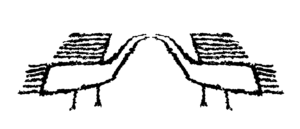
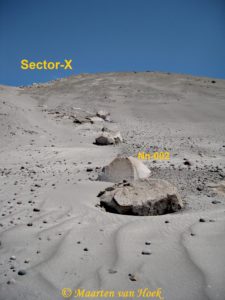
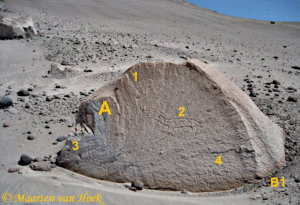
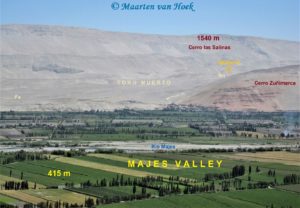
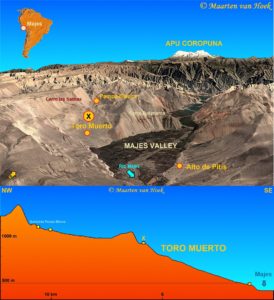
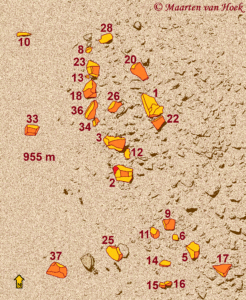
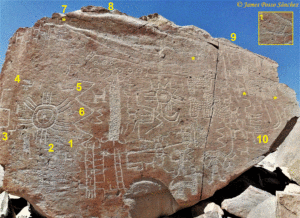
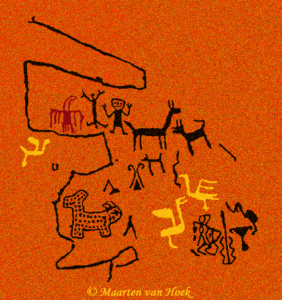
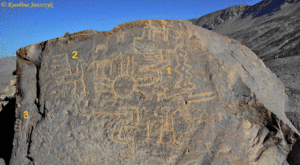
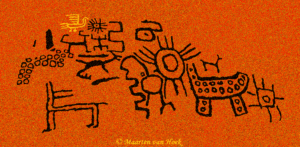
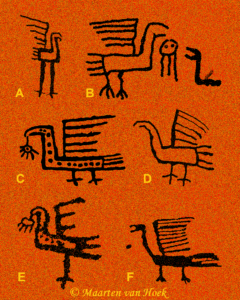
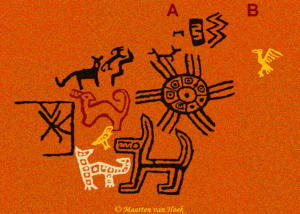
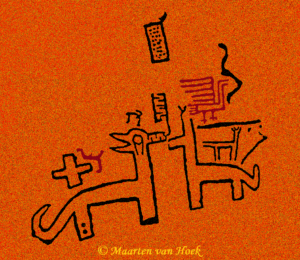
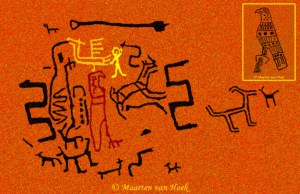
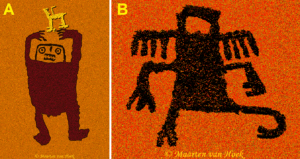
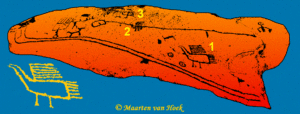
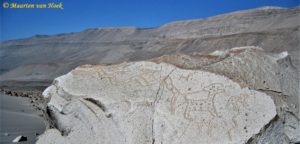
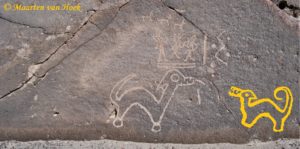
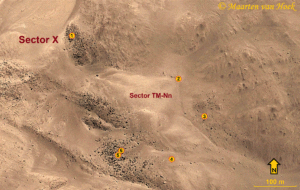

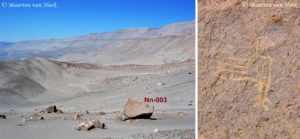
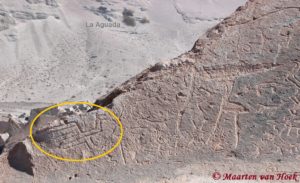
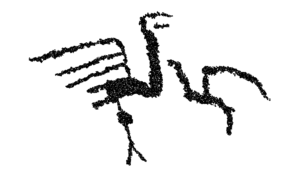
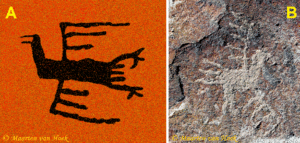
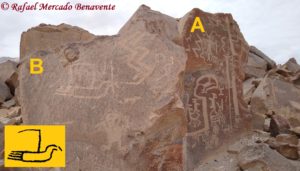
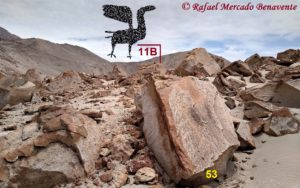















Leave a Reply